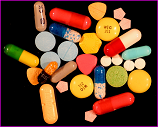Posted on May 21st, 2021 by Mary Lord
 Students in grades 5 to 7 learn about how muscles work and follow the engineering design process to create their own biomedical device to aid in the recovery of a strained bicep. They discover the importance of rest to muscle recovery and that muscles (just like engineers!) work together to achieve a common goal.
Students in grades 5 to 7 learn about how muscles work and follow the engineering design process to create their own biomedical device to aid in the recovery of a strained bicep. They discover the importance of rest to muscle recovery and that muscles (just like engineers!) work together to achieve a common goal.
Image from NASA Jet Propulsion Lab
Read More
Filed under: Class Activities, Grades 6-8, Grades K-5, Lesson Plans | Comments Off on Build an Artificial Bicep
Tags: anatomy, biceps, biomechanical engineering, Biomedical Engineering, Class Activities, Grades 6-8, Grades K-5, Human Body, Lesson Plan, muscles
Posted on November 27th, 2013 by Mary Lord
 Student teams in grades 6-8 reinforce their knowledge of the digestive system and explore the concepts of simulation and the engineering design process by developing a pill coating that can withstand the churning and acidic environment of the stomach. They test the coating’s durability using a clear soda to simulate gastric acid.
Student teams in grades 6-8 reinforce their knowledge of the digestive system and explore the concepts of simulation and the engineering design process by developing a pill coating that can withstand the churning and acidic environment of the stomach. They test the coating’s durability using a clear soda to simulate gastric acid.
Read More
Filed under: Class Activities, Grades 6-8, Grades 6-8, Lesson Plans | 2 Comments »
Tags: Biology, Biomedical, Chemical Engineering, Class Activities, coating, digestion, Grades 6-8, Human Body, Lesson Plan, Manufacturing Engineering, Materials Engineering, medicine, pill
Posted on June 7th, 2010 by ASEE
 In this lesson from the California Academy of Sciences, students study the effects of pollution upon human health and consider how we can protect ourselves from the effects of carginogens. They build a lung model to learn how their lungs and diaphragm work to make them breathe. The lesson features a demonstration on how incomplete combustion of fossil fuels releases particles into the air that can harm humans.
In this lesson from the California Academy of Sciences, students study the effects of pollution upon human health and consider how we can protect ourselves from the effects of carginogens. They build a lung model to learn how their lungs and diaphragm work to make them breathe. The lesson features a demonstration on how incomplete combustion of fossil fuels releases particles into the air that can harm humans.
Read More
Filed under: Grades 6-8, Grades 9-12, Lesson Plans | Comments Off on Lesson: Pollution and Lung Health
Tags: Environmental science, Human Body, Pollution
 Students in grades 5 to 7 learn about how muscles work and follow the engineering design process to create their own biomedical device to aid in the recovery of a strained bicep. They discover the importance of rest to muscle recovery and that muscles (just like engineers!) work together to achieve a common goal.
Students in grades 5 to 7 learn about how muscles work and follow the engineering design process to create their own biomedical device to aid in the recovery of a strained bicep. They discover the importance of rest to muscle recovery and that muscles (just like engineers!) work together to achieve a common goal.








 Student teams in grades 6-8 reinforce their knowledge of the digestive system and explore the concepts of simulation and the engineering design process by developing a pill coating that can withstand the churning and acidic environment of the stomach. They test the coating’s durability using a clear soda to simulate gastric acid.
Student teams in grades 6-8 reinforce their knowledge of the digestive system and explore the concepts of simulation and the engineering design process by developing a pill coating that can withstand the churning and acidic environment of the stomach. They test the coating’s durability using a clear soda to simulate gastric acid. In this lesson from the California Academy of Sciences, students study the effects of pollution upon human health and consider how we can protect ourselves from the effects of carginogens. They build a lung model to learn how their lungs and diaphragm work to make them breathe. The lesson features a demonstration on how incomplete combustion of fossil fuels releases particles into the air that can harm humans.
In this lesson from the California Academy of Sciences, students study the effects of pollution upon human health and consider how we can protect ourselves from the effects of carginogens. They build a lung model to learn how their lungs and diaphragm work to make them breathe. The lesson features a demonstration on how incomplete combustion of fossil fuels releases particles into the air that can harm humans.